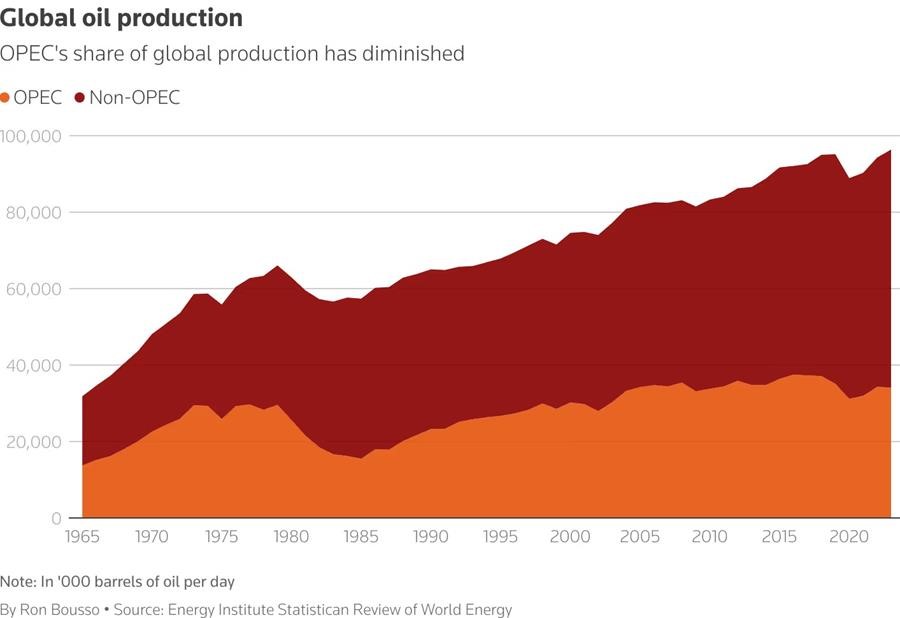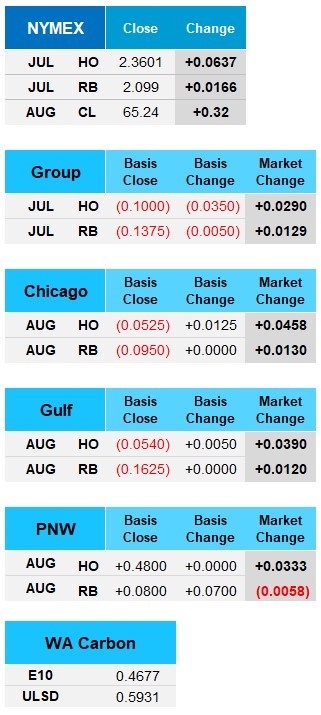Iran: President Trump stated that the U.S. is maintaining its maximum pressure campaign on Iran, including oil sanctions, but hinted at potential flexibility to support Iran’s post conflict recovery. He remarked that Iran would need funds to rebuild, suggesting a possible easing in enforcement without formally lifting sanctions. A day earlier, Trump said China could continue buying Iranian oil after the Iran and Israel ceasefire, though the White House later clarified that U.S. sanctions remain unchanged. The Trump administration had previously sanctioned several Chinese refineries and port operators for purchasing Iranian crude. Trump's Middle East envoy, Steve Witkoff, said the remarks were intended as a diplomatic signal to China and Iran, emphasizing cooperation rather than economic harm.
U.S. Weekly Energy Stocks: U.S. crude oil inventories fell by 5.8 million barrels last week to 415.1 million barrels, significantly more than analysts expected, driven by increased refinery activity and stronger demand, according to the EIA. Crude stocks declined by 464,000 barrels, while refinery runs increased by 125,000 barrels per day and utilization hit a high of 94.7%, the highest since July 2024. Gasoline inventories dropped by 2.1 million barrels despite forecasts for a build, as gasoline demand rose to 9.7 million barrels per day, the highest since December 2021. Distillate stockpiles, including diesel, also fell abruptly by 4.1 million barrels against expectations of a build.
Sale in Gulf of America: The U.S. Department of the Interior, through the Bureau of Ocean Energy Management (BOEM), has proposed Lease Sale 262, set for December 10, 2025, which will offer around 15,000 unleased blocks, covering approximately 80 million acres, across the Western, Central, and Eastern Gulf of America. These offshore areas span from 3 to 231 miles from the coast, with water depths ranging from 9 to over 11,100 feet. The proposal initiates a 60 day public comment period starting June 27, and features a reduced royalty rate of 16⅔ percent, the lowest for deep water since 2007, to attract bidders. This sale is the first of three planned under the 2024–2029 Outer Continental Shelf (OCS) leasing program aimed at bolstering U.S. energy security. The Gulf region is estimated to hold 48 billion barrels of undiscovered oil and 141 trillion cubic feet of natural gas, making it a key asset in the country’s energy strategy. The auction reflects a strategic effort to unlock offshore energy potential while maintaining transparency and encouraging industry investment.
Market Overview: Crude oil prices edged up today, sustained by a sharp 5.8 million barrel draw in U.S. crude inventories and renewed optimism following the Iran Israel ceasefire. Strong summer driving demand is supporting fundamentals, while geopolitical risks, particularly potential disruptions from Iran in the Strait of Hormuz, remain a key uncertainty. Despite this, analysts expect robust OPEC+ output to cap price gains. Looking ahead, the market leans slightly bearish, with OPEC and the IEA forecasting modest demand growth of about 0.7 million barrels per day and rising supply likely to push inventories higher into year end. Energy futures are starting with another bullish day as crude is up $0.15 to $65.08, HO is up $0.0305 to $2.3329, and RBOB is up $0.0096 to $2.0920.

The recent 15% swing in oil prices during the latest Middle East conflict reflects a reduced risk premium, showing that markets are less reactive to geopolitical tensions than in past decades. Historical events like the 1973 Arab oil embargo and the 1990 Gulf War triggered sharp price surges, but modern market responses have been more measured. This shift is partly due to improved access to instantaneous data, satellite tracking, and surveillance, which allows traders to assess supply risks more accurately. Additionally, oil producing nations have adapted by creating alternative export routes and expanding storage, reducing vulnerability to regional disruptions. Saudi Arabia and the UAE have major pipelines bypassing the Strait of Hormuz and maintain overseas storage to buffer supply interruptions. As a result, while oil prices still respond to conflict, the scale of reaction is more restrained and informed by better infrastructure and intelligence.

Markets moved sharply today on both political and geopolitical developments. The U.S. dollar fell after President Trump criticized Fed Chair Powell and hinted at replacing him, sparking expectations of rate cuts that lifted equities to near record highs. A ceasefire between Iran and Israel eased geopolitical tensions, boosting global risk sentiment and strengthening foreign currencies against the dollar. Crude oil prices initially rose on the ceasefire news but gave up most gains by the close as doubts emerged over the effectiveness of a U.S. airstrike on Iran’s nuclear facilities. Uncertainty remains around Iran’s crude exports and U.S. sanctions, with little incentive for the U.S. to lift restrictions given Tehran’s weakened leverage and continued hostile stance. Crude oil ended bullish for the second day in a row up $0.32 to $65.24 a barrel, HO up to $2.3601, and RBOB up to $2.0990.

